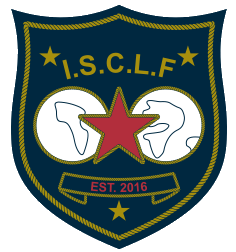STARBOAT MASTS
By Richard Gates
When Alan Holt and I were engineers in the aviation industry we enjoyed sailing Stars, built our own equipment, and started Spar Tech Co. Alan had already established himself as a talented Star sailor and continued to improve his performance in the Star community. He has since left Spar Tech and is pursuing his interest in windsurfing, growing grapes and making wine.
We have seen many developments and changes in the Starboat spars over the years. There have been fads, misunderstanding of the technical facts and real developments.
Wooden spars had wildly differing weights, stiffness, and shapes. When the Star Class established the tip weight limit and allowed the aluminum spar, the characteristics of the Star mast homed in on a very narrow variation of weights, stiffness, and shapes. The Class officials did an excellent job of picking a reasonable tip weight limit that has allowed the development of very good spars.
The Development of Mast Sections
Since the 60’s, spar mast refinements have been slow and intuitive – solid spruce, cedar cored spruce or fir, elliptical aluminum section, teardrop sections, pointed front with blunt aft section, and finally an aerodynamically designed section.
Each design evolution has had distinct advantages; reduced overall weight, increases strength and consistency, smaller section, increased stiffness reduced tip weight for same stiffness, and finally an aerodynamically designed low drag configuration.
The wooden spar shapes were very limited due to the strength of the material. A small, teardrop section wood spar would have easily failed in compression, so the dominant shapes were rather boxy and usually had rather square corners aft.
When the Class allowed aluminum, the spar designers were a bit timid and inexperienced and the first aluminum Star mast was an elliptical shape. Not a very exciting shape, but new material made the bonfires after a windy race day a thing of the past.
As the spar builders and designers gained experience, the favorite section became the 57 x 85 mm teardrop shape. This shape had no theoretical and/or experimental data to support its design. It just looked good to the eye. When this shape was introduced to the Star Class in 1972, the current desktop computer power was a dream and computational fluid dynamics programs did not include boundary layer effects.
With today’s powerful desktop computers and sophisticated computational fluid dynamics (CFD) programs it is possible to analyze the airflow about the Star jib, mast and mainsail while taking the boundary layer effects into account.
Trends
In the later days of wooden spars, competitors would do almost anything to save weight aloft – from hollow tubes for bolts to ski poles for spreaders. The introduction of the Class minimum tip weight set a lower limit for the spars and allowed a structurally more conservative design, but the minimum tip weight was still desired. Today, some sailors are content to pay a tip weight penalty to achieve perceived stiffness.
For a while some level racing designs supposedly experimented with highly corrosive, high strength alloys in an attempt to get stiffer spars for the same or reduced weight. This is not possible since the higher strength alloys have the same modulus of elasticity and the same stiffness to weight ratios. Fortunately the Class had the vision to limit the allowable aluminum alloys to 90% aluminum which prevents the use of many high strength, highly corrosive alloys.
Recent Developments
Spar Tech wanted to improve the aerodynamic characteristics of the Star mast and challenged Arvel Gentry, (www.arvelgentry.com) a noted aerodynamicist who has worked with mast shapes and sail/mast interaction, to investigate Star mast/sail interaction and design a better mast shape. The only constraints given to Arvel were the Star Class size limits, the requirement that the external surface could not have any concavities, and the current sail shapes. Arvel was free to design any shape that was aerodynamically superior.
The result of this extensive study is the Spar Tech Company G section, Low Drag or GoLD mast. The GoLD mast section has near minimum tip weight, improved aerodynamic performance, and bend properties to match existing mainsails.
The Advantages of the GoLD Section
The knuckle on the forward corner is followed by a sloped and much flatter region that is faired into the maximum thickness point. This sloped region gives the boundary layer time to change from the laminar to the turbulent condition; and once the boundary layer is turbulent, it is able to stay attached further back on the mast before it separates. This is why golf balls have dimples. This is accomplished without concavities and/or trip devices.
.jpg)
The figure shows the theoretical flow separation behind the GoLD Star mast when analyzed in the presence of the jib and main sail. The additional flow separation for the conventional teardrop section Star mast is superimposed for reference. The improvement is obvious and significant.
The result of the smaller separation region behind the GoLD mast section is improved Lift/Drag characteristics for the mast, jib, and main sails combination.
.jpg)
It was a rare opportunity for the Star Class to have access to the expertise of Arvel Gentry and the CFD programs. Take advantage of what technology has to offer:
.jpg)





